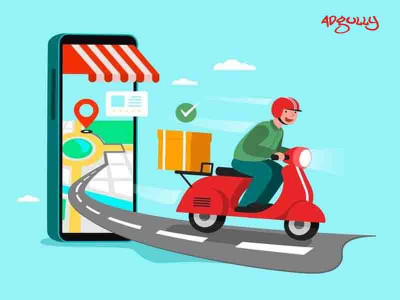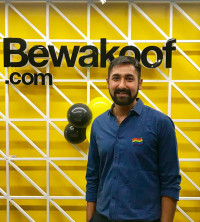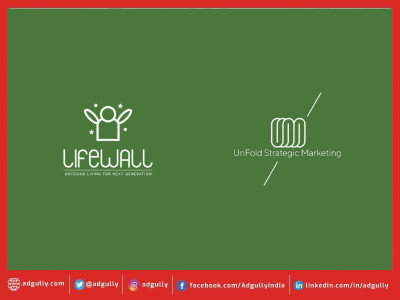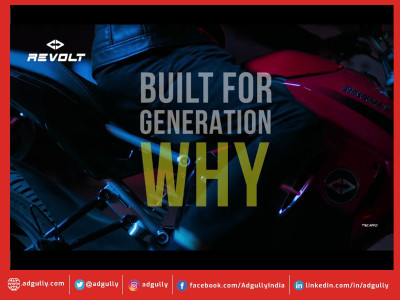Q-commerce is seeing an upward trend for now, but over time it will come at a cost
With e-retail sales accounting for 14.1% of all retail sales worldwide, e-commerce continues to grow at a speedy rate despite global economic uncertainty. What’s more, Statista forecasts that these figures will keep growing and reach 22% in 2023. E-commerce is thriving in all corners of the world, savvy retailers need to stay up to date with the latest ecommerce stats and keep up with the latest trends in the industry. Now, it is all about Q-Commerce. When you ask consumers if they would like things fast, the answer is a resounding ‘yes’, but how quick is quick really? With options given to consumers in varied numbers in terms of speed, be it 15 minutes, 10 minutes or 5 minutes either, is increasing the competition between the e-commerce platforms.
Quick commerce is defined as delivery of consumables within a span of 45 minutes with a nominal delivery charge. Dunzo and Swiggy Instamart are some of the players in this segment and Blinkit now. The top growth drivers for this expected rise in the quick commerce market are shifting consumer behaviour from value seeking to convenience seeking leading to weekly, small-sized purchases compared to larger, monthly purchases; rising adoption among convenience seeking customers with unplanned ordering behaviour; increasing affinity of online and Gen-Z customers towards top-up and indulgence purchases; and Covid-led change in consumer behaviour towards using online as replacement for kirana.
India's quick commerce sector is expected to grow 10-15 times in the next five years to become a $5 billion market by 2025, according to a new report by consulting firm RedSeer.
The Need for Speed trend
Lloyd Mathias, Investor, Business Strategist and an Independent Director, remarked, “Speed as a differentiator has just emerged and many ecommerce firms are addressing this. Grofers rebranding to Blinkit with a promise of delivering groceries within 10 minutes and Reliance acquiring a stake in Dunzo has further underlined this Quick commerce trend. I think there will be a market for these services but over time quick delivery will come at a cost. Also this trend will broaden beyond groceries and food delivery to other essential services like medicines; and urgent utilities.”
According to Vishal Nicholas, EVP & Head- Planning & Strategy, dentsuMB India and Dentsu Impact, “Need for speed trends existed even before the 10 mins delivery phenomenon. People were okay getting stuff in 20-25 mins or so and brands like Dunzo did that beautifully. The ‘need for extreme speed’ i.e. the 10 mins trend is a supplier side trend that is being created by newer players who need to disrupt the status quo. The market for 10 mins delivery will always be a niche I suspect as that will cater to youngsters/ young couples largely who suddenly find themselves out of cigarettes, colas or even diapers and then these items become critical. This segment values convenience and customers are willing to pay for it unlike the rest of India who thinks twice about the delivery fee. However, more than the pressure on the delivery departments, there will be pressure on feasibility as 10 min deliveries usually have only 1-2 items ordered which drastically bring down the bill value and therefore the economics of it all.”
He further said, “Eventually, there will be consolidation in the q-commerce space as they will be bought by larger e-grocery/commerce players who themselves are looking to cover all flanks.”
The e-commerce industry in India has enjoyed an upward trajectory over the past few years. According to recent e-commerce statistics, India’s e-commerce industry is all set to become the second-largest market in the world by the year 2034. The growth of e-business in India will also help the country become a major force in the e-business space with an estimated growth potential that will be just shy of $100 billion by the year 2024. Utkrishta Kumar, Vice President and GM, Business at Meesho, said, "At Meesho, we have built a strong play book to manage the local nuances of Covid-led restrictions that might be put in place. We have the tech capabilities to implement local guidelines into our order taking flow to comply with restrictions, if any. Most importantly, our third-party supply chain ecosystem has been at the core of our fulfillment operations, enabling last-mile delivery of orders even during previous lockdowns. Meesho’s Clear Care Program is focused on ensuring their safety and wellbeing. We have put together safety protocols and continue to work with them to ensure its implementation. In an endeavor to help customers stay abreast with the developments, we have also designed a ready consumer communication plan.”
“At Meesho, we are seeing an increase in demand for health and wellness products over the last one week. For instance, the orders for sanitizers have doubled and there has been a 34% increase in demand for masks,” he added.
The e-commerce space in India is bustling with activity. This has been mainly due to the pandemic where many folks are opting for shopping online rather than traveling physically to the stores. According to recent e-commerce statistics, when it comes to e-commerce market share in India, fashion and apparel, and groceries are the top-performing sectors in the e-commerce sector in India These sectors are closely followed by consumer electronics, which is projected to experience a growth of up to 8% by the year 2025.
“In the fashion & beauty category, we are witnessing a continuous expansion of the online market as more first time online buyers come to the fold, while existing buyers drive up the frequency of purchases with the increasing comfort of buying online. We continue to witness replacement and impulse purchases happening as we serve the evolving need states of our growing customer base. In these volatile times, retail platforms need to think about structural and tech-enabled ways to serve their customers best and to drive stronger repeat behaviour in addition to driving customer acquisition. COVID has induced changes to ways in which enterprises or brands engage with consumers and e-commerce has certainly strengthened its bond with shoppers over the last 2 years with its value proposition. As we continue to battle the pandemic, our learnings, especially in terms of managing safety of our employees, delivery partners, and customers, will go a long way in seeing us well through in what is believed to be the final stage of the pandemic,” remarked Achint Setia, Head of Marketing and Social Commerce, Myntra.
While e-commerce sales were stunted at 8% during 2020 in India, compared to 20% in the US and China, e-commerce trends in India are growing steadily despite the COVID-19 outbreak. The Indian e-commerce in q-commerce market is now seeing big upsides in the number of online shoppers who are purchasing more online than ever before especially due to omicron hitting the ground, people are willingly paying for premium products, growing market for easy-to-cook products at home delivery, demand for healthy and nutritional products, rising consumption of newer products through global experiences and last but not least the apparel which is helping them to stay in those comfy items when you are working from home. The main target for these brands is to serve their customers within the time keeping all the restrictions in mind.
Commenting on how the brands prepare their logistics and supply chain during the lockdown period if it happens again due to the omnicron virus or increasing of Covid cases, Bewakoof’s Founder & CEO Prabhkiran Singh said, “At Bewakoof, we work with multiple logistics service providers to hedge our fulfillment risks. During previous lockdowns too, we were able to mitigate this by working dynamically with our partners and manage serviceability across regions/ pincodes/ localities, while increasing revenue share from other regions through the marketing efforts. This time too, we are confident of having minimal business impact due to any potential lockdown. We also have multiple warehouses with distributed inventory for fulfillment of customer orders.”
“Retail demand is already shifting online. E-commerce portals can expect a spike of 30%-50% across categories. Work from home norm has started just about when offices were opening up and might extend till April. Categories such as mobile & laptop accessories, athleisure and essentials would spike. Certain cities/ states shall be supply starved owing to stringent lockdown guidelines as compared to others. Replication of top selling articles in the above categories across the highest demand geographies for fastest delivery will ensure maximum profitability,” he added.
Mathias felt, “The last two years have had businesses across the board come to terms with a VUCA world– volatility, uncertainty, complexity and ambiguity. Most agile businesses have navigated through the worst period using agility and drawing on the resilience of their workforce.”
He further noted, “Going forward, businesses need to be watchful and ensure their employees are safe and secure while ensuring minimal disruption to their operations. Employee, associate and public safety must come first and commercial considerations may take a back seat.”
Not only did the marketers/ advertisers behaviour of serving changed during these unprecedented times but also the consumers buying behavior changed frequently due to the work from home habit which gave a sudden rise to the e-commerce platforms that were not really going to take place at least the next five years.
“Undoubtedly, there has been a huge spike in e-groceries. Not just digitally savvy youngsters but even senior citizens are comfortable with ordering groceries online. However, one area that has still not changed is the preference for touch and feel when it comes to buying fruits and vegetables. The majority who have taken to e-groceries in the last two years still prefer buying fruits and vegetables themselves if the situation permits. This shows that either the grocery players haven’t got the quality right or there is still a mental barrier to not choosing these yourself. Could be a bit of both”, said Nichloas said.
Singh remarked, “The COVID-19 pandemic has brought unprecedented challenges to the world and led to a new normal lifestyle. At the onset of Pandemic we had seen panic buying from customers especially all essential goods. Over the period of time, Customers buying are more need based and value driven and aspirational buying has taken a backseat. Since Customers are leading a new normal lifestyle, Comfort Wear/ Loungewear have seen exponential growth on our platform.”




















Share
Facebook
YouTube
Tweet
Twitter
LinkedIn